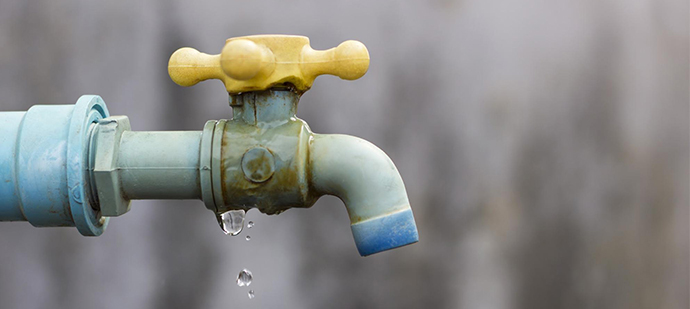Find A Plumber Near You
Call Us Now:

Hidden plumbing leaks can cause a wide array of problems for your home or property. Something as small as a tiny crack or a pin-sized hole in your plumbing pipe(s) can cost up to $600 a month. Meanwhile, a minor undetected toilet leak can cost around $150 per month on average.
Hidden plumbing leaks can also cause the following problems:
Keep in mind that hidden leaks don’t only happen beneath the walls of a home or property. They can also be undetected minor leaks in faucets (indoor and outdoor), showers, toilets, and even unchecked exposed pipes. If you are experiencing any of the above problems we’ve listed, then you probably have one hidden leak or more in your property.
In this situation, it would be best to call in an expert plumber to address the plumbing leaks, prevent further complications, and stop your water bill from increasing. Time is of the essence because leaking pipes can escalate into burst pipes if not addressed promptly.
This guide will help you determine whether or not you have a hidden plumbing leak and help you assess if it’s time to call in an expert plumber. Let’s get started!

Let’s first check if there really is a hidden plumbing leak within your property, using these four easy steps.
If you’ve been a homeowner for some time, you likely have an idea of how much you usually spend on your monthly water bill. If there is a noticeable marked increase, it’s usually a telltale sign of hidden leaks.
However, if you’ve only seen an increase in your water bill for the most recent month, try to recall if there had been a change in your water usage for that month. Did you opt for more warm baths instead of using the shower last month? Did you have additional guests for an extended period of time? By first cancelling out any possible reasons for an increase in water usage it eliminates the chances of the hike in costs being associated with a plumbing leak.
So, how significant of an increase in the monthly water cost is considered a sign of hidden leaks? This can vary depending on the size of the hidden leak or how many you have in your home. Here are some figures to consider:
A consistently increased water bill beginning during a certain month can be a sign that the hidden plumbing leak was sustained during that time.
Decreased water pressure can be caused by clogged pipes, problems with the area’s water supply, or pipe leaks, therefore, it is not a standalone sign for hidden leaks. If water pressure is consistently decreased in your property, it’s likely a sign that it’s a plumbing issue – whether it’s a leaking pipe or not. In such cases, it would be best to call in an expert plumber to effectively diagnose and solve your plumbing problem.
This is a real-time test that you can perform to confirm if you have a hidden leak.
Note: If there are no changes to your water meter at all but you have noticed any of the problems that we covered in these first three steps, it would be best to call in an expert plumber. They will be able to properly evaluate the situation and identify if you are dealing with a leak or another type of plumbing issue.
The formation of mould resulting in water contamination can happen due to hidden plumbing leaks. These concerns may not always point to hidden plumbing leaks (especially if this is the only visible sign), but nonetheless, they are serious problems that need further investigation – as well as immediate attention from a healthcare provider.
Here are some symptoms that point to the presence of mould:
Additionally, here are the symptoms of drinking contaminated water:

Now that you are certain you have a hidden plumbing leak, here are effective ways to find them.
Earlier, we mentioned that each leaky faucet can cost at least an additional $20 each month. If you have multiple leaky faucets, the costs can quickly add up. The good news is that your hidden leak may actually be hiding in plain sight.
Check all the faucets inside your home and outside of it. Even faucets that are constantly dripping count as leakage.
A leaky toilet can cost you $150 or more each month. First, listen for the sound of a constantly running toilet to determine that it is leaking. If you’re still not sure, here are the steps for the food colouring test:
If the colour shows up in the toilet bowl, you have a running toilet. If the colour seeps through to the outside of the tank, you are dealing with cracks that are causing your toilet to use up more water than it should.
The unattended running toilet will eventually need to be replaced. 1st Rooter can assist you with expert plumbers. They will help you from the first step of toilet rough-in measurements to the last step of installation.
Mould and water damage are telltale signs of plumbing leaks in the pipes that run through the walls of the home. Make sure to check everywhere for black mould, warped wood, squishy walls, peeling paint, or even rotting wood. Also check behind cabinets, under the sink, and other places that are often overlooked. These types of water damage and mould are most commonly seen as plumbing issues in older homes.
Dealing with hidden plumbing leaks? Our emergency plumbing services can help! Here at 1st Rooter Plumbing, we get the plumbing job done right the first time. We also make sure to apply the least invasive techniques for fixing hidden leaks and we always clean up our work area right after; the only evidence we were ever there is that your plumbing issues are solved completely!
So contact us today and our friendly team will be more than happy to help.
Leave A Reply